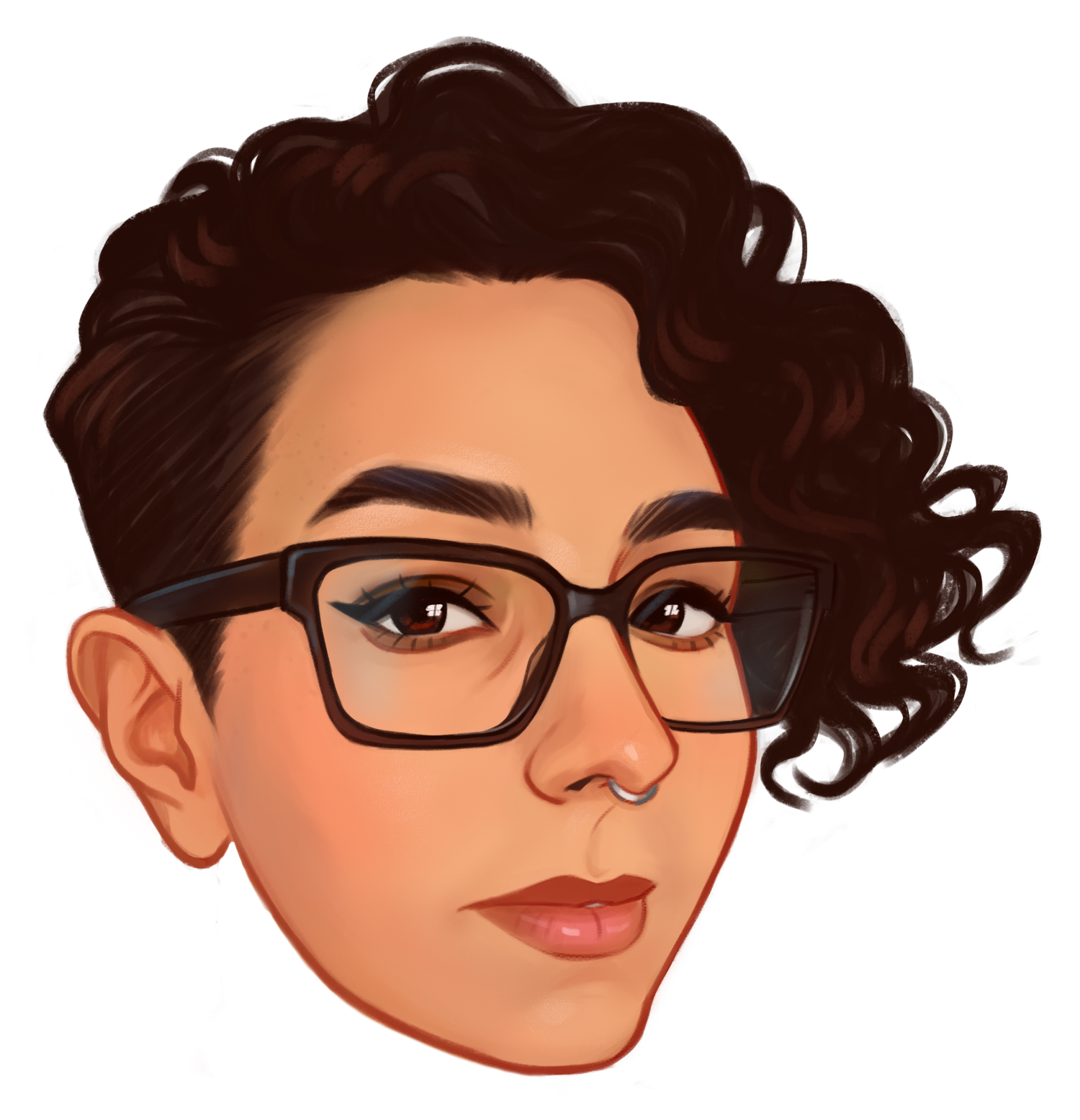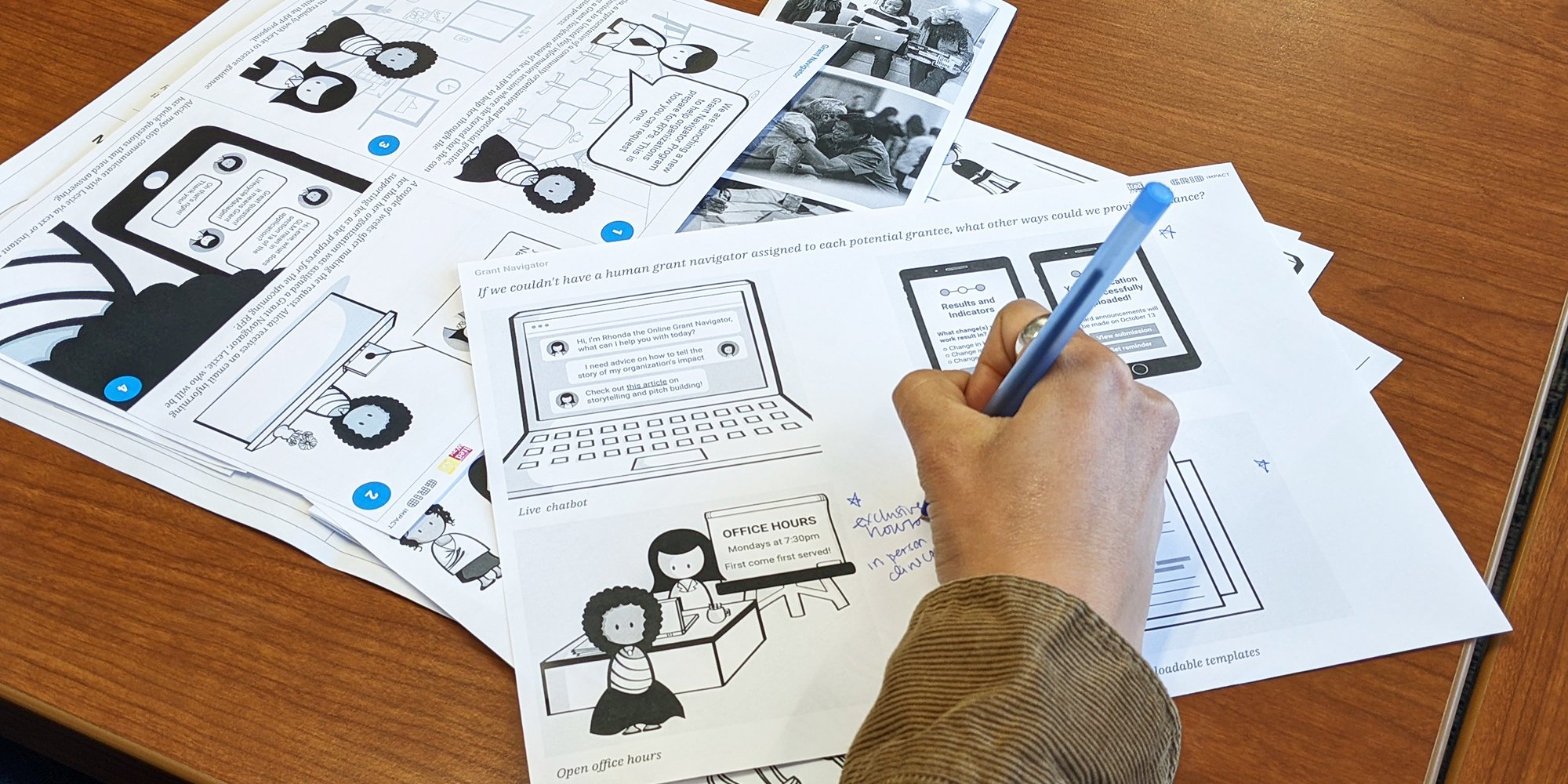Design
Grounded in the disciplines of service design, user experience (UX) design, participatory design and co-design, and drawing from critical design movements such as equity-centered design, liberatory design, transition design, and more—my design practice focuses on applying design to the social sector, and cares about shifting how we engage system-impacted communities and center lived experience in less extractive, harmful, and paternalistic ways.
For some insight into my approach, I have spoken about trauma-informed design, the pitfalls of applying design in the social sector given its capitalistic roots, building sites of resistance in design, as well as written about unraveling the links between design and policing, confronting the power designers wield, supporting designers transitioning into the social sector, designers’ ethical commitments, and the need to build critical discernment in design. I was also one of the people consulted in the creation of the Trauma-Informed Youth-Centered Health Design framework.
Equity-centered grantmaking
Co-designing an investment model with the Asheville and Buncombe County community
United Way of Asheville and Buncombe County (UWABC) is a locally-governed, nonprofit organization that asked: “How might our community design an investment & grantmaking model that centers authentic and equitable community participation in all stages of decision making?” Using equity-centered design, a GRID Impact team coached community Design Fellows and led the project team through the equity-centered design process to reimagine the community investment model, culminating in a set of community-driven recommendations to change how $350,000,000 will be gifted to organizations and members of the community. I served as a member of the GRID Impact team that provided UWABC with participatory research, co-creation, co-design, prototyping, and design coaching services. To learn more, you can read more on GRID Impact’s website.
Organizations: GRID Impact, United Way of Asheville and Buncombe County
Years: 2021 - 2022
Sarari
Increasing the support of community leaders for reproductive health in Niger
Sarari is a program that promotes a supportive environment for birth spacing and family planning in Niger, by increasing the support for reproductive health activities amongst influential community leaders in. Funded by USAID and implemented by Population Services International with the technical assistance of YLabs, I served as the project lead and managed all matters related to design research, prototyping, and service design, as well as project timelines, deliverables, client relationships, and capacity building. To learn more, you can read my blog post “Who Who Decides about Family Planning in Niger? The Imam, the Parents, or the Wallet?” which describes the final design of Sarari and the design research and prototyping insights that led us there. I presented this work at the 2018 Design Research conference in Melbourne. The work was also shared by PSI Impact (including a link to the three-volume publication documenting this engagement) and the Health Communication Network, and was a featured case study on iF Social Impact Prize.
Project website: sarari-niger.org
Organizations: YLabs, Population Services International
Years: 2017 - 2018
Project Match
Exploring behavioral factors to improving job placement and retention in Jordan
The International Rescue Committee’s Airbel Impact Lab launched Project Match, an initiative that aims to generate at-scale employment opportunities for Jordanians and Syrian refugees, in Jordan. Project Match houses a series of data-driven, experimental interventions that seek to algorithmically match job seekers and firms. As a design consultant, I worked to create data collection tools, as well as oversee and synthesize design research to identify pain points in the job search process for job-seekers (including a set of user journeys and profiles), and in the recruitment process for employers, around which Project Match’s approach and comparative advantage were built. Additionally, I designed and prototyped a variety of behavioral interventions, including social proof testimonials, as well as tools and guides for job search planning, interview preparation, and understanding on-the-job expectations, that were included as part of the different interventions evaluated in a randomized controlled trial (RCT).
Organization: International Rescue Committee
Year: 2018
Girl Bozz
Prototyping solutions to improve access to safe abortion services in Ghana
As part of a larger engagement where YLabs was working with the Planned Parenthood Association of Ghana as well as young people, providers, and key stakeholders to co-design and prototype youth-centered solutions to reduce unsafe abortion among adolescent girls in Ghana, I served as a contractor to support the team with the production low-fidelity prototypes that were field-tested with end users in Accra, as well as the creation of testing guides for each prototype. The solutions prototyped included both product and service ideas, requiring a range of prototyping skills from light cardboard fabrication and bookbinding to storyboarding, visual design and screen mockup creation, as well as card sort materials and paper prototyping.
Organizations: YLabs, Planned Parenthood Association of Ghana
Year: 2019
CwC Guide
Guiding NGOs in evaluating their communications with refugee communities in Jordan
In December 2018, a design research study to understand how refugees in Jordan currently access information and the existing humanitarian channels for Communication with Communities (CwC) was conducted by the International Rescue Committee and the UNHCR. Key findings from this study suggested that there are significant discrepancies between organizations’ perceptions of which channels are most effective, and how refugees access and use these channels. These differences result in major gaps in the information ecosystem, and have led the refugee population feeling left alone in finding information through informal channels, translating into an environment where uncertainty, mistrust, and rumors abound. As design consultant, I designed a user-friendly monitoring and evaluation (M&E) guide for local NGOs in Jordan to self-assess their CwC efforts, based on the three archetypes of refugees accessing information highlighted in the study, as well as four main principles to guide their information delivery activities: specificity (how relevant the information is to their problem), timeliness (how quickly they can get the information), simplicity (how simple is it to understand) and expertise (coming from a verified/trusted source).
Organizations: International Rescue Committee
Year: 2019
Sahel Shake
Reengineering the smartphone experience for women in resource-constrained contexts
“Sahel” is a transliteration of the Arabic words ساحل referring to the North African region, and سھل meaning “easy”. “Shake” is intended as a wink to Android’s releases named after sugary treats. Sahel Shake is a reimagined Android OS experience that meets the needs of women in resource-poor contexts. Initially a winning concept in response to the GSMA mWomen Design Challenge, Sahel Shake was later implemented by mobile network operator Indosat in Indonesia. To learn more, here are two interviews with our team, where we talk about our design process and some of the challenges we faced along the way: "Interview with our Design Challenge Grand Prize winner" in the GSMA blog, and "Sahel Shakes Up Mobile Design" in SmartChimps. We presented Sahel Shake at the 2013 Mobile World Congress in Barcelona, and it was featured in USAID's Innovation Catalog.
Organizations: GSMA mWomen, Indosat Ooredoo
Year: 2013
MyVoice
Building an SMS-based tool for citizen feedback on agriculture and health programs in Nigeria
Funded by the World Bank and implemented by Reboot and Dimagi, MyVoice is a project focused on collecting citizen feedback through the use of an SMS-based tool. As the program manager with Reboot, I led multiple field visits to Nigeria, conducted ethnographic research, recruited and trained local teams, and helped research, prototype, test, and plan for the implementation of the service. To learn more, you can read my blog post describing a day in the life of this project: "Design Diary: Nigeria Edition!" This work was the 2015 Core77 Service Design Award winner, and I presented it at the 2012 Better World by Design Conference, "Research in Design for Development" panel.
Partner: World Bank, Reboot, Dimagi
Year: 2012
District Housing
Creating a web application for affordable housing in the Washington, DC area
District Housing is a web application that makes it easier for residents and social workers to find and apply for affordable housing in the Washington DC area. As the UX designer, I conducted user research and interviews with Section 8 applicants, built and tested prototypes, and worked with the Code for DC team and our local partner, Bread for the City to develop and implement the application. To learn more, you can read my blog post describing the research behind the product: "What we're making: District Housing." Additionally, the project was featured by Technical.ly in an article titled “Applying for low-income housing is a pain. Code for DC is building a hack.”
Organizations: Code for DC, Bread for the City
Year: 2013
EasyPack
Redesigning a humanitarian data toolkit deployed in Dadaab, Kenya
EasyPack is an intuitive and easy-to-implement organizing solution for the Internews Humanitarian Data Toolkit (HDT). My team conducted interviews with Internews staff and partners who piloted the HDT in Dadaab, Kenya, then built and tested a series of prototypes, taking into consideration the different cultural contexts and needs of users of varying levels of technical knowledge. The final prototype was the winner of Design Thinking DC‘s 2013 Summer of Design. To learn more, you can look at the showcase poster and presentation describing the EasyPack design.
Organizations: Internews
Year: 2013









